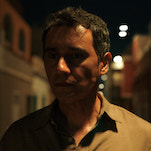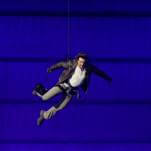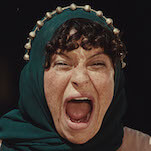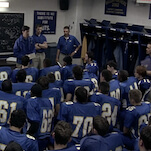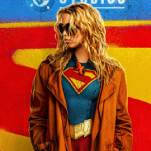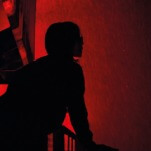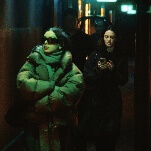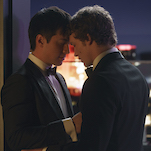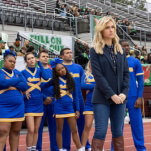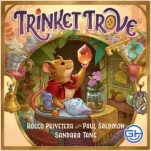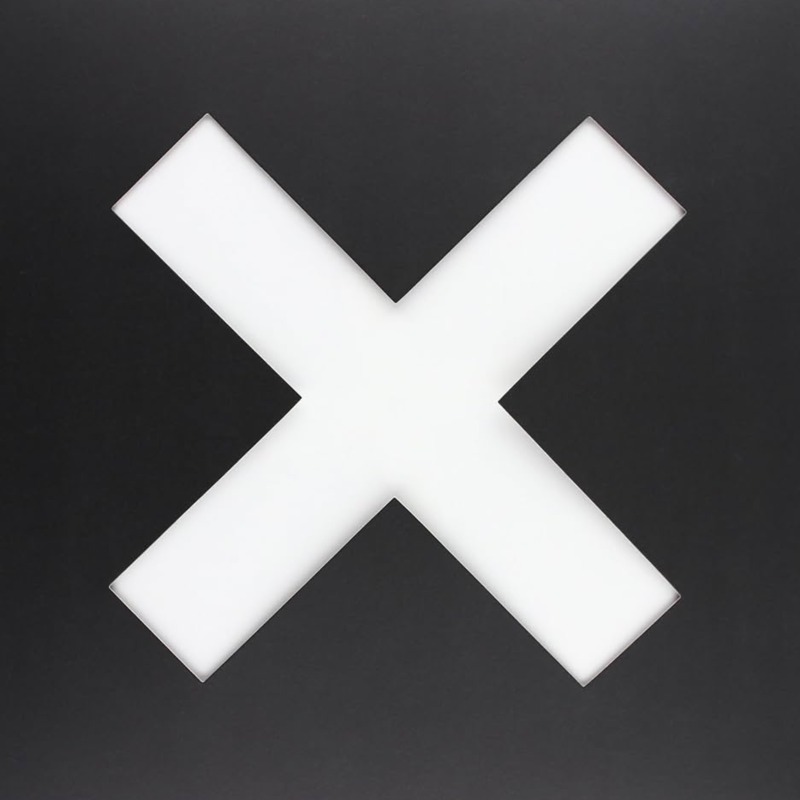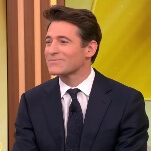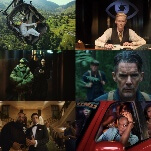As each new year begins, folks celebrate, sometimes with great relief, the passage of time and the cultural highs that held us aloft. Looking back means not quite being ready to look forward, which helps explain the phenomenon of bad movies that plague theaters every January, a notorious dumping ground for films deemed too unsavory for awards season and too unmarketable for the crowded summer slate. Nobody’s champing at the bit to see these films. “January movies” has long been synonymous with “crap” (an attitude articulated succinctly by this impactful mantra), and no wonder: trudging through the slush, cold, and darkness just to watch some multiplex junk is a tall order. Any excuse to stay home where it’s warm is welcome.
It has become a cruel fact of the industry: movies that drop in January are often doomed to critical and financial failure. It’s a brutal and deliberate practice by studios and distributors; crummy movies are placed in the early weeks of the new year to alleviate the suffering of both filmmakers and audiences alike. (Or to put a spotlight on crud for the brave crud-seekers out there.) However, there are examples of January movies that were wrongly dumped, and/or dismissed too swiftly by critics who entered the new year bereft of good cheer. Due to the hostile vibes of the year’s early days, these movies are often consigned, sight unseen, to the junk heap (or to the crevasses of the nearest convenient streaming platform).
In making up for these oversights, let’s pay tribute to the best examples of the January movie. Naturally, there are those titles that slip the gravitational pull of their early-year drop and rise as unexpected hits: Before Sunset, Waiting For Guffman, Paddington/Paddington 2, Juice, M3gan, the staggering oeuvre of Jason Statham. The list goes on. Those are good movies too, but for this list we’re rooting through the January dump for the true diamonds in the detritus, those transcendently sleazy, distasteful, unconventional, or downright strange movies that were cast to the pit but deserve a much higher perch.
Here are the eminently watchable—even great!—January movies found buried in the dumping ground, pictures whose lurid delights flush our faces and make the first month of the year a little warmer.
1. Brain Dead (January 19, 1990)
Not to be confused with the similarly named Peter Jackson film, Adam Simon’s Brain Dead is a unique and unmissable battle of the Bills. Conjured from a shelved Charles Beaumont screenplay taken from Roger Corman’s archives and updated with a late 1980s eye for corporate chicanery and yuppie smarm, this Julie Corman-produced oddity explores the byzantine causeways of a paranoid mind—or minds, as the case may be (things, putting it mildly, get weird). Bill Pullman stars as a neuroscientist on the cusp of performing a controversial procedure that pulls information from the human brain, meant for exploitation by an unscrupulous corporate yes-man played by a slicked-back Bill Paxton. What starts as a cracked mad-science flick in the vein of The Twilight Zone by way of Verhoeven soon careens into more cerebral territory akin to Jacob’s Ladder or Altered States, a frequently bewildering, inventive, and demented piece of filmmaking (co-starring Bud Cort!) that was all but glossed over upon its initial release. Shout! Factory has since given Simon’s film a 2K boost on Blu-ray, which means Brain Dead may have a second life yet.
2. The Hand That Rocks The Cradle (January 10, 1992)
The sole entry on this list that saw box office success, supplanting Hook and maintaining the top spot for four consecutive weeks, Curtis Hanson’s The Hand That Rocks The Cradle was a haven for audiences seeking lurid thrills to heat them up from the winter chill. This audience smash divided critics, with Gene Siskel calling it “distasteful.” Thirty-two years on, Mr. Siskel is still correct. Powered by peak performances from Rebecca De Mornay and Annabella Sciorra, Hanson’s film, written by nu-Planet Of The Apes producer Amanda Silver, elevates the film’s trashy material into a mesmerizing game of cat-and-mouse, in which a vengeful widow (De Mornay) infiltrates the family (Sciorra, Matt McCoy, and Madeline Zima in her first role) whom the woman blames for the suicide of her rapist husband (John de Lancie). The distaste mounts as this scenario builds to a ridiculous crescendo of broken hearts, glass, and bones. So, why is this here despite being a qualified financial success? Because The Hand That Rocks The Cradle remains in that nebulous zone between Hollywood hit and cult favorite. The weirdos should claim it before the inevitable reboot rolls into town.
3. Matinee (January 29, 1993)
Tumble-Vision and Rumble Rama: These are the fictional precursors to IMAX and 4DX, as seen in Joe Dante’s marvelous ode to B-movie mania, Matinee. They’re technological contrivances designed to enhance the moviegoing experience, but are they necessary? They are, according to Lawrence Woolsey (John Goodman), the big-as-a-buffalo sleaze-meister who arrives in Key West hawking his latest monster picture, Mant! The town’s good citizenry, meanwhile, are preoccupied with an impending nuclear holocaust darkly alluded to on every television and radio broadcast. “Nobody’s had a good night’s sleep in years,” he explains. “So you gotta have a gimmick, you know? Something a little extra.” Woolsey might have balked at 4DX, as its mechanical bumping and hissing lack his earthy showmanship, but who’s to say? Maybe cinemas might have benefitted from a gimmick or two when Matinee screened to little fanfare next to the Tom Berenger-starring Sniper. Still, times are as unsettling as ever, nostalgic safe bets remain king, and few calibrated throwbacks come as sweetly or vividly remembered as this—perhaps Matinee is owed a second run.
4. Body Snatchers (January 14, 1994)
Abel Ferrara, Stuart Gordon, Larry Cohen—if those names mean anything to you, you’re likely well acquainted with their Body Snatchers remake. But perhaps like most moviegoers in 1994, you went to the multiplex to catch Car 54, Where Are You? or Blink instead. Don’t blame Gen X for letting Body Snatchers slip into obscurity; Warner Bros., fearing they had a turkey on their hands, dropped Ferrara’s first studio work into limited release before unceremoniously dumping it to the home video market months later. It’s plain to see why Ferrara’s movie made the WB brass nervous: the sturdy craftsmanship of the Don Siegel and Philip Kaufman adaptations was replaced with fringe artistry that toyed with the franchise’s themes of paranoia, creating a bleak, dreamlike glaze of unreality where people speak like aliens (mostly in disembodied voiceovers) well before a single pod makes it to the screen. Bojan Bazelli’s gorgeous cinematography (also present for Ferrara’s King Of New York and Gore Verbinski’s The Ring) gives this sci-fi freakout the look and feel of a Tony Scott movie gone wrong—or right, if one digs these sorts of oddities. Come for the squiggly alien effects, stay for the unnerving performance from Meg Tilly, who asks a simple question halfway through (“Go where?”) that underscores this unjustly overlooked sci-fi wonder with a chilling sense of doom.
5. Terrified (January 13, 1995)
Information concerning the release of James Merendino’s obscure psychosexual thriller is hard to come by. This is certainly a result of its bewildering name changes—Terrified was released as both Toughguy and Evil Never Sleeps—and its low-budget, shot-on-video aesthetic all but guaranteed a limited theatrical drop in the dead of winter. The film’s distributor had no idea how to market it; just look at the stock softcore artwork for its VHS release, which omits Heather Graham and her co-stars for no justifiable reason. (They omitted Lisa Zane, Carrie-Anne Moss, and Balthazar Getty, not to mention Richard Lynch and Don Calfa!) Terrified is decidedly a “for the sickos” type of curio, with Graham’s nymphomaniac character pitted against a city-wide horde of leering perverts, exploitive authority figures, and unhelpful lounge lizard friends who bask in her inevitable Repulsion-style breakdown but offer little emotional refuge. As for its look, it sure seems that Merendino, who’d go on to direct SLC Punk a few years later, employed guerrilla tactics to shoot most of it (if there were permits involved in its exterior Los Angeles night shoots, it’d be a surprise). But the no-budget appearance doesn’t obscure the provocative yet correct things Terrified has to say about how sexually active women are perceived, how vulnerability is wrongly viewed as sexual interest, and how gendered insults are tossed around once male egos are wounded. Off its axis, provocative in its imagery (especially in its depiction of Jesus Christ), and all but forgotten—Terrified is a true diamond in the January rough.
6. Tales From The Crypt Presents Demon Knight (January 13, 1995)
Scanning the top-grossing films of 1995, Tales From The Crypt Presents Demon Knight charted at #82, nestled between Gus Van Sant’s To Die For and Paul Verhoeven’s Showgirls—hardly bad company. Universal Pictures, which distributed this foray onto the silver screen from HBO, would have undoubtedly preferred a loftier rank. “Homevid biz should be muscular,” Variety wisely speculated upon Demon Knight’s wintry release, and coupled with a box office haul that almost doubled its modest production budget, the Cryptkeeper’s first big-screen bow became a sleeper success. Would it have broken wider during that year’s especially rowdy summer? Hard to say. Still, Ernest Dickerson’s Raimi-esque monster movie has since become a cult favorite and justifiably so, boasting a terrific ham performance from Billy Zane as a demon seeking a key containing the blood of Christ and an ensemble of character actors (Thomas Haden Church, C.C.H. Pounder, Dick Miller, the list goes on) who provide moralistic EC Comics color to the proceedings. With arcing sprays of neon-green blood, bawdy sex, decapitations galore, and a mosh pit’s worth of funky demon freakazoids, Demon Knight tried to kick the January doors open only to find them frozen. The reception it’s received since has been decidedly warmer.
7. Turbulence (January 9, 1997)
File this one under “We Never Knew How Good We Had It.” A vicious, sleazy action thriller set almost exclusively inside a besieged 747 with not one but two killers on board: Brendan Gleeson’s Stubbs, a Southern-fried mayhem-maker who gets inventive with his arsenal, and Ray Liotta’s disarming “Lonely Hearts Killer.” It’s quality over quantity compared to Con Air. Both men are transported during a sparse (and, yes, turbulent) Christmas Eve flight; when Stubbs decides to change course on their flight to death row, an unlikely hero rises in the form of Lauren Holly’s Teri, a recently heartbroken flight attendant who navigates Liotta’s advances and the massive plane to a relatively safe landing. MGM might have predicted that critics would reject the movie (Roger Ebert called it “schlock, hurled at the screen in expensive gobs”) and naturally jettisoned it to the early weeks of 1997. And while Turbulence is unquestionably a subversive artifact of Clinton-era political correctness—one where gender roles are flipped on their heads, much like its 747 does during one of the film’s many ridiculous set pieces—those seeking post-holiday trash (that happens to boast a bonkers performance from Liotta) will find that Turbulence gets them there in style.
8. Zero Effect (January 30, 1998)
Few mystery films are as cozy as Zero Effect. Sorting through the mess of movies dumped during the weekend of January 30, 1998 is a bit of a trick; it premiered the same weekend as Great Expectations, Desperate Measures, and Deep Rising, three bigger, or at least louder, movies that each have their pleasures but are not equal to Jake Kasdan’s directorial debut. It didn’t boast sweeping romance, elevated thrills, or schlock action business, but Zero Effect does have a smart twofer in Ben Stiller and Bill Pullman as its ersatz Watson and Holmes, navigating a tricky murder case just as their frazzled professional relationship finally pulls apart. (In truth, this is based on Arthur Conan Doyle’s “A Scandal In Bohemia.”) As a buddy mystery yarn, it’s less caustic than Shane Black’s Kiss Kiss Bang Bang or The Nice Guys and features a twist ending that would shame The Usual Suspects in how much it doesn’t feel like a cheap rug-pull. In fact, the ending of Zero Effect recontextualizes our feelings for the characters at play (including a femme fatale played marvelously by Kim Dickens), an “oh shit” moment that makes the drama that’s just played out onscreen suddenly feel more human and intimate. “Passion is the enemy of precision,” Pullman’s character says. This may be true, but it’s also the best companion one can have when the days grow cold and the movies theaters have on offer become grim.
9. The Mothman Prophecies (January 25, 2002)
This peculiar, true-life-adjacent thriller from former music video director Mark Pellington stars Richard Gere as John Klein, a Washington Post reporter tracking down sightings of the “Mothman,” a cryptid soothsayer who purportedly foretells doom to whomever it encounters. As mysterious happenings in Klein’s investigations coincide with mass tragedies, questions about the Mothman and its role in the sudden death of his wife (Debra Messing) begin to take shape. If it sounds like another supernatural early-aughts groaner (it’s often edited like one), The Mothman Prophecies keeps its distance from similar sub-X-Files cheese through the affecting emotion simmering underneath its central mystery, with Pellington and screenwriter Richard Hatem exploring themes of loss, grief, and the spiritually depleting pursuit of unanswerable questions that threaten to devour Klein whole. Critics initially wrote this John Keel adaptation off as too elusive for its own good, and its modest box office suggests that audiences weren’t prepared for its big questions with few answers. It’s since found a cult resurrection courtesy of streaming (and possibly those unexplained sightings of the beast), with a broader audience more willing to plunge into the unknown with all the bleak implications that come with it. (Bonus: It closes out with one of the loudest—and best—songs ever recorded by the band Low.)
10. The Grey (January 20, 2012)
The Grey is arguably the most January movie ever, measured by a few factors. For starters, it was marketed to action hounds looking to see Liam Neeson slug a pack of wolves with broken bottles taped to his knuckles. Imagine their surprise upon catching The Grey during its opening weekend, when Joe Carnahan’s survival movie turned out not to be a grueling action romp à la Taken but rather a measured and muted meditation on masculinity and mortality, with that killer stinger at the end of its criminally misleading trailer turning out to be—spoilers—the actual ending of the film. In context, Neeson taking a swing at these wolves isn’t solely meant for our visceral pleasure; rather, it’s the only response one might have in a situation where life has suddenly become tenuous, and the only way to safety is through. Oh, and there’s another reason why The Grey wins “Most January Movie” and, appropriately, it’s rather cheap and in dubious taste: its Arctic setting sure looks cold. In The Grey, there’s no respite for Liam Neeson and no comfort for those who cheer him on.





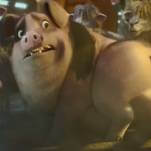
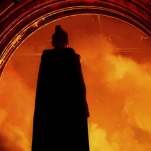

![HBO teases new Euphoria, Larry David, and much more in 2026 sizzle reel [Updated]](https://img.pastemagazine.com/wp-content/avuploads/2025/12/12100344/MixCollage-12-Dec-2025-09-56-AM-9137.jpg)


